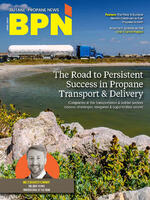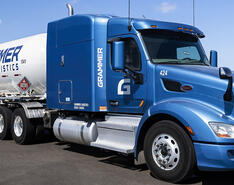
With the summer in full swing and the dust — or, in this case, snow — of winter fully settled, now is a good time to reflect on how your propane company operated during this past winter heating season. Were you ready for it? What did you accomplish? What did you learn? If you run a propane delivery and service business, you know this year's cold weather presented many opportunities. The question is, did you capitalize on them?
Reflecting on your experiences during the winter heating season can help guide you to maximize future profits and ensure your heating oil delivery business runs more smoothly and efficiently.
For example, you might realize that certain strategies were highly effective and should be continued, while others need to be adjusted or abandoned. You may discover untapped opportunities for growth or identify areas where you need additional support or training. Consider how your business compares to similar businesses in your area. You might find that you have all the data you need to make great decisions. Or you might discover that you and your business would benefit from knowing more about how your metrics match up with your peers.
3 Ways to Assess the Propane Heating Season
There are three factors to consider in a self-assessment of the heating season: people, processes and pricing.
1. People
Did your employees meet your customers' expectations?
- How many repeat calls did you have compared to last winter?
- How many customer complaints about price did you have compared to last winter?
- How many customer complaints about service results did you have compared to last winter?
- How many five-star reviews or customer compliments about your people did you get compared to last year?
- What was the work ethic and care level like among your team?
- Did everyone pull their weight and help in whatever way they could?
- How consistent was your team’s attendance record?
- Did some of your employees struggle with the strain of a busy season?
- How well did you show appreciation for everyone who came through for you?
2. Processes
How many new customers did you get because you had the capacity to be available when they were disappointed with their existing service?
- Did your existing processes contribute to customer trust in your company's excellence?
- How many customers experienced your showing up on time for service calls and fixing the problem on the first visit? How often were customers less than pleased?
- How many run-outs did you have compared with last winter?
- How many gallons per time-card hour did you deliver? How did that compare to what you expected?
- Would better communication or expanded training for either back-office or field employees (or both) create better results?
- How did the cost of your processes compare to the cost of the processes of your successful peers?
- How well did your vehicle maintenance strategies hold up to keep your fleet on the road?
- Would you have been better off if you had more employees during the peak periods? Would you have been able to make it through with fewer employees and could have had lower headcounts all year long?
3. Pricing
Did you charge the right margin on your fuel and other services? If you had raised prices a bit more than you did, would you have gained net value from higher margins? Or would you have lost net value from additional customers who quit because of price?
- Were your pricing strategies based on data analytics that helped to maximize the tensions between increased margins and customer losses from price sensitivity?
- What was your average gallons per delivery this winter heating season, compared to last winter? Are there reasons why it was either higher or lower?
- What were the results of your billable service work when it was busy? Would you have been better off with even more work, or would less work have been preferred?
- Do you have operational software that helps you make good pricing decisions?
Why You Should Make Time to Examine Your Propane Business
When the busy season hits, you find out quickly how well prepared you are. What specific guidance and insights do you wish you had shared with your team and incorporated into your standard practices before it got busy? What plans do you have, if any, to improve your protocols and practices before the next busy season?
If your profitability was great, then you should take a moment to celebrate your people and your business practices. If profitability left something to be desired, then perhaps you can see it as an opportunity to make changes for the better.
Even if you don’t have answers for all the questions or you only have answers for some, don’t fret. Simply taking the time to consider them might be enough to help guide you on your path. Change is painful, and owners of fuel delivery and service companies are accustomed to absorbing the pain of suboptimal circumstances. Across the board, we have very good people in our industry who are, in general, rather stoic in their ability not to complain about what others might describe as problems.
Take this opportunity to reflect on how much of that pain you have — both in your day-to-day and when it gets busy — compared to the most successful of your peers. As you reflect, take appropriate action to improve your operations and reduce your pain.
For more content on strategizing for the winter heating season, check out "Strategize for Your Next Propane Supply Surprise."


